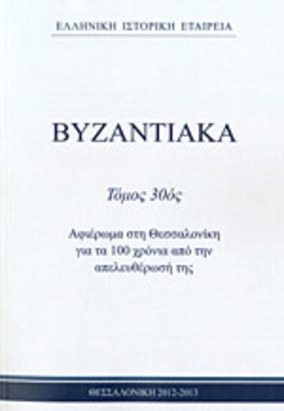Δυο βυζαντινά μανουάλια στη Μεγίστη Λαύρα του Αγίου Όρους
Part of : Βυζαντιακά ; No.23, 2003, pages 167-184
Issue:
Pages:
167-184
Parallel Title:
Two byzantine candelabra in the monastery of Megisti Lavra, Mount Athos
Section Title:
Συνεργασίες
Author:
Abstract:
Our paper deals with the study of the two identical monumental bronze candelabra (height 1,20 m.) preserved in the Katholikon of the Monastery of Megisti Lavra on Mount Athos. Each candelabrum was cast in multiple pieces, fused in fire to five separate sections: the base which is beared by three lions, the three parts of the body, composed of the rectangular element with openwork decoration, separating the two shafts, and finally the disk with the candleholder. Piece moulds were probably the most popular method of casting more complicated shapes during the Byzantine period.Some elements of the decoration of candelabra of M. Lavra were based on eastern models. The Islamic influences in our candelabra should be noticed particularly in the rich openwork decoration of the panels of the central rectangular element, and in the high conventionalized lions which are bearing the base. Both the openwork decoration and the conventionalization of the animal form caracterize eastern bronzes, particularly the Seljuk bronzes of the 11th -12th centuries. As L. Bouras noticed, this influence might be explained by the existence of Seljuk works in Byzantium, as well as by the prestige of Islamic bronzes in Constantinople itself.If we consider the development of the casting technique in byzantine candelabra, known to some extent, by the two candelabra in the Katholicon of the Monastery of the Transfiguration in Meteora, the two candelabra of M. Lavra should be dated most probably to the 12th or the 13th century.
Subject:
Subject (LC):
Notes:
Περιέχει εικόνες και σημειώσεις




